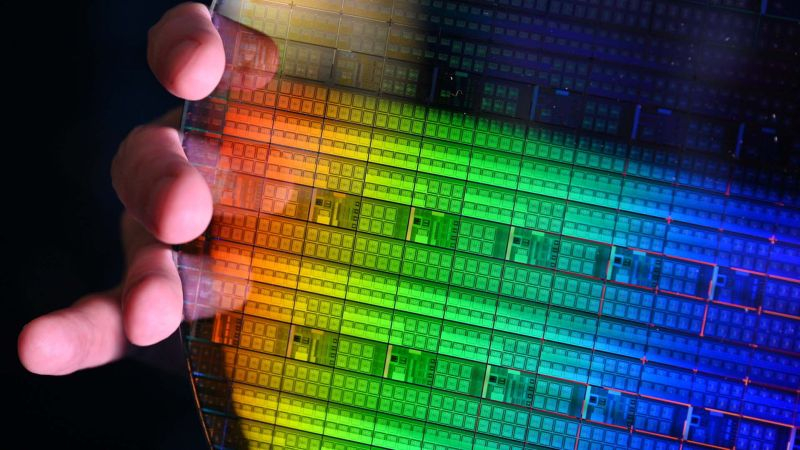Industry expert Patrick Moorhead tried to assess Intel’s alleged plans to separate its production facilities from the company’s main business on the pages of Forbes. In his opinion, doing this right now does not make much sense for the company.

Image Source: Intel
The efforts of Patrick Gelsinger, who now heads Intel, to carry out a large-scale restructuring of the company’s business require significant financial resources. At the same time, Intel’s revenue is not only not growing, but is even declining, and one cannot count on pronounced positive dynamics in the coming quarters either. Gelsinger now has to correct the mistakes of Intel’s previous management, which led the company to lag behind its competitors in the technology field. This gap affects the characteristics of processors produced by Intel; as a result, they look worse compared to competitors’ offerings, and the company loses market share and reduces revenue. Intel will be able to break this vicious circle no earlier than in two years, according to experts.
It is generally believed that this week Intel’s board of directors may consider restructuring the company’s business, and one of the options would involve separating the company’s production facilities. This scenario has both positive and negative sides. For example, Intel’s competitors will trust an independent contract manufacturer more, since they are now in no hurry to provide design documentation for their products, which the company could produce at its own facilities. In fact, if Intel’s manufacturing assets became independent, then AMD could easily entrust the new company with the production of its components using 18A technology, which Intel itself calls advanced for the entire global industry. Even as an argument in bargaining with TSMC for better prices, such a factor could benefit AMD.
Qualcomm, a major processor developer, is famous for its “omnivorousness” in terms of choosing contractors for the production of chips, so it could also be interested in Intel’s specialized services. Moreover, if the latter advances in the development of its technical processes to stage 14A. However, Qualcomm may also have concerns about protecting its developments from rival Intel, so the independent status of the manufacturing company could help deepen their cooperation.
In addition, Intel may start producing Maia server chips for Microsoft using its 18A technology as early as next year. So far, Intel management mainly mentions the number of potential clients in the production area, but is in no hurry to disclose their names. In any case, Intel currently produces mostly chips for its own needs.
Proponents of the following arguments may oppose dividing Intel on this principle. Firstly, the capitalization of the company’s production assets as such is now negative. Accordingly, it will be difficult to attract investor money to an unprofitable business on the stock market, so the placement will be private, during which a number of large investors will buy out their shares in the capital of the company being spun off from Intel. Secondly, without the assistance of Intel management, it will be more difficult for the new company to find customers. To make its contract business more attractive to outside investors, Intel will have to wait until 2027 or 2028 for it to start turning a profit. Until then, dividing the business on this basis does not make much sense. Perhaps these issues will be raised at a meeting of the Intel board of directors, which is due to take place before the end of this week, as some sources note. Under the current conditions, Intel is unlikely to be able to repeat the experience of AMD, which at the end of the decade before last risked separating its production assets, and GlobalFoundries turned into a self-sufficient contract manufacturer with the help of patient and wealthy Arab investors. But even here there were some compromises – GlobalFoundries, for example, was forced to abandon the development of the 7-nm process technology for financial reasons.